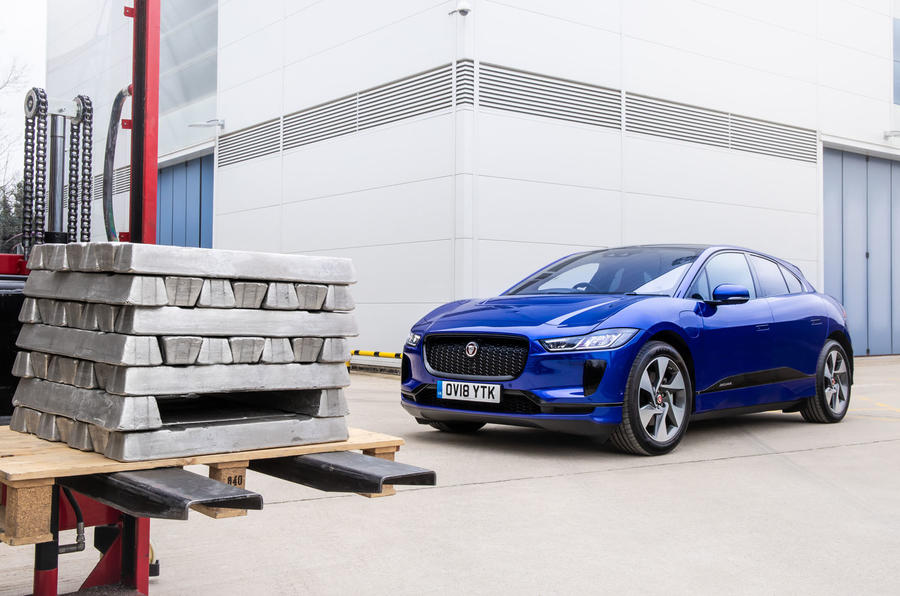Jaguar Land Rover is using pre-production Jaguar I-Pace electric vehicles to trial a new aluminium recycling scheme planned to reduce wastage and CO2 emissions throughout its entire manufacturing process.
In the Reality Project, aluminium will be recovered from end-of-life vehicles and melted down to be reformed into high-grade material suitable for new model production.
The batteries of the prototype vehicles will also be reconditioned and reused.
The move comes as part of a company-wide initiative to reduce the CO2 impact of vehicle production and minimise the amount of material wastage that comes from scrapping cars.
Jaguar Land Rover claims it has “already reduced its global vehicle manufacturing operating CO2 by 46% per vehicle and remains committed to an ongoing decarbonisation process”.
Between September 2013 and January 2019, it reused 300,000 tonnes of scrap metal taken from older vehicles. It currently uses 180,000 tonnes of aluminium every year.
While many car makers, such as Nissan and Mercedes-Benz, also use recycled aluminium, they do so through outsourced suppliers. If successful, the Reality Project will allow Jaguar Land Rover to plan for the retirement of large fleets of company cars in-house.
An alloy used in the construction of the original Jaguar XE saloon was composed of 75% recycled aluminium, meaning that over half the car's body contained reused material.
A team of scientists at Brunel University in London are carrying out strength tests on the recycled material to ensure that it can offer the same crash protection as fresh aluminium.
Read more
Jaguar J-Pace to arrive in 2021 as flagship SUV
Jaguar Land Rover wins case against copycat Evoque maker
Bolder looks, classier cabin, more tech for 2019 Jaguar XE









Join the debate
Add your comment
Volvo cars chassis are mainly
Volvo cars chassis are mainly steel, the iPace uses aluminium which is much harder to recycle but much lighter.
I think Volvo
claimed years ago, that at least 85% of its vehicles were recylcable, and I am sure I read somewhere that the interior of the XC40 used predominantly recycled materials.
Just checked, they achieved it in 2002, the EU set a goal of it being achieved by all manufacturers by 2015
Nice idea
JLR recycling its cars without troubling the customer with its sometimes unreliable products!
But it's not a new one: I thing General Motors did the same thing 20 years ago with its pioneering EV1 electric car.
Now if only more manufacturers could prematurely recycle their cars, maybe our roads could be reclaimed to make them fit to drive on...